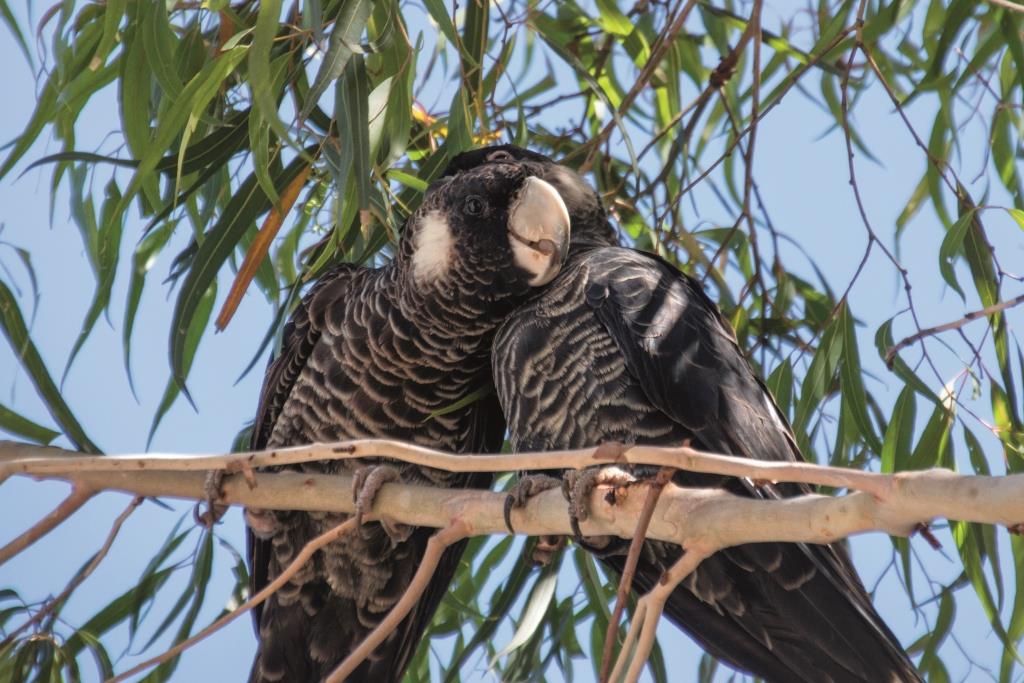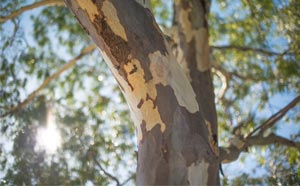Plants, Animals & Soils

- Wannagrow
- Rocca Way waterwise garden
- Urban Forest Strategy
- Local Biodiversity Plan
- Environmental Management Plans
- Plants
- Animals
- Acid Sulphate soils management
- Pests & disease management
- Bushfire management
- Walking trails
Wannagrow
Through our Wannagrow program, we offer native plant bundles to the community at events during the year.
Wannagrow Home offers residents free trees and shrubs suitable for private gardens.
Wannagrow Verge provides residents a selection of verge friendly plants.
The next Wannagrow giveaway will be held on Sunday 15 June 2025 at the Wildflower Society of WA’s northern suburbs branch at Kingsway Sporting Complex. For more information, keep an eye on the City’s events page.
This initiative is proudly co-funded by Water Corporation's Waterwise Greening Scheme and forms part of our ambition for Wanneroo to be a leading waterwise City.
Rocca Way waterwise garden
A demonstration garden has been setup in Rocca Way, Wanneroo to showcase a selection of waterwise trees perfectly suited to the local environment.
Visit the Rocca Way waterwise garden page for more information.
Urban Forest Strategy
The Urban Forest Strategy is a key document in setting the City’s goals for protecting, retaining and improving canopy cover and vegetation over the next 20 years. A key initiative includes a move to focus the City’s annual tree planting program in suburbs with less than 5 percent tree cover and those containing heat islands.
Local Biodiversity Plan
The Local Biodiversity Plan is the result of collaborative and forward thinking to the overall protection, retention and management of our local biodiversity values. It outlines the direction we wish to take in conserving our local natural areas for future generations and for the sustainability and liveability of our community.
Environmental Management Plans
Environmental Management Plans (EMPs) are often required as a condition of approval or consent when a development or change in land use is proposed that is likely to impact native vegetation, sensitive ecosystems or cause nuisance emissions. EMPs are site or project specific plans developed to ensure that appropriate environmental management practices are followed during a projects construction and/or operation.
The Environmental Management Plan Guidelines have been prepared to outline the format and content that the City of Wanneroo requires for EMPs lodged with the City for approval. The guidelines apply to the following EMPs:
- Vegetation and Fauna Management Plan
- Conservation Area Management Plan
- Wetland Management Plan
- Karstic Features Management Plan
- Dieback Management Plan
- Revegetation Plan
Lodge your Environmental Management Plan by clicking below:
Lodge your Environmental Management Plan online
NOTE
As of 1 September 2021, the City of Wanneroo introduced new Land Development fees and charges (please refer to page 59 of Schedule of Fees and Charges 2021/22). These new fees include assessment fees that cover the actual cost and expenses incurred by the City in:
- Providing services
- Commissioning or undertaking any review of documentation associated with development engineering and landscape matters including administrative services
- Technical resources
- Specialist advice and;
- Consultation.
All fees are charged in accordance with Section 6.15, 6.16 and 6.17 of the Local Government Act (WA) 1995 (as amended). An invoice will be issued to the Company/Person designated in the Submission Form.
It is expected that the turn-around time for an EMP requiring no changes or revisions will be approximately 30 days from the lodgement date.
Site specific Management Plans
- Neerabup Industrial Area – Meridian Business Park Environmental Management Plans
- Koondoola Regional Bushland management plan
- Mindarie-Quinns Rocks Foreshore Management Plan
Plants
The City of Wanneroo is home to twelve different vegetation complexes. These include 5 different threatened ecological communities and 42 rare and priority flora species.
Where rehabilitation has to occur, the City prefers the use of species associated with the native vegetation complex.
Verge Tree request

The City's annual tree planting program consists of planting 3500 new trees in public open spaces, streetscapes and residential verges. All trees planted by the City are manually watered for a two year establishment period to ensure their ongoing health and structure.
Around 1000 trees are planted annually on residential verges. Trees are planted on residential verges through tree replacement and the Residential Street Tree Planting Program. Through this program, residents can request a free tree to be planted on the verge adjacent to their own property.
Request forms need to be submitted by the 30 April each year with trees then planted the following winter.
If you would like a tree for your verge fill out a form by clicking below:
Animals
Wanneroo is home to a large variety of animals including 27 protected species. For the majority of large developments fauna surveys are required. These requirements are detailed in the Environmental Management Plan guidelines above.
Protecting our native animals
The City of Wanneroo is home to an amazing array of native fauna, but sadly some of these animals face extinction.
Boasting 32km of coastal foreshore and more than 120 conservation reserves, the City has many suitable areas to support native mammals including the quenda, western brush wallaby, possum, honey possum and western grey kangaroo.
To confirm where native animal populations are currently located, the City’s conservation team and volunteers have been monitoring our foreshore and reserves, and collecting data via trail cameras and on-ground evidence surveys.
In recent months, native quenda populations have been returning to areas from which they had previous disappeared. Fauna surveys also show returning populations of wallabies and kangaroos in some of the City’s larger reserves.
These results are a testimony to the City’s conservation work success.
The community can help play a role in quenda recovery by reporting sightings of quenda to the City’s Tree and Conservation Team on 9405 5000 or conservationmaint@wanneroo.wa.gov.au
Feeding wild birds
It is an offence in Western Australia to feed native fauna, including birds, without a licence. Fines of up to $20,000 are part of updated regulations under Section 155 of the West Australian Biodiversity Conservation Act 2016.
Further information can be found by clicking below:
Feeding wild birds information
Avian botulism
We have created a list of frequently asked questions regarding avian botulism.
Further information
If you see sick or injured wildlife please contact: Wildcare Helpline on 94749055 or Native Animal Rescue Malaga on 9249 3434
Note the City does not offer bee removal services, for these please look up local pest control services or bee havens.
For information related to pets, poultry or livestock please see our Animals & Pets page.
Acid Sulphate soils management
Acid Sulphate Soils are naturally occurring soils that occur in wet and waterlogged areas such as lakes and wetlands. If disturbed, they can cause acidity in soils which can leach into ground water and even damage structures once mobilised.
The City manages acid sulphate soils through the planning and development process, where conditions are applied to approvals requiring developers to manage or treat soil that has the potential to cause contamination. As such, acid sulphate soils are typically managed on a case by case basis throughout the City.
For further information on acid sulphate soils including how to identify and locate them and what to do prior to developing on or disturbing acid sulphate soils please refer to the Department of Water and Environment Regulation’s Contaminated Sites Branch.
Pests & disease management
The City of Wanneroo employs pesticides to help eliminate a number of problematic weeds and pests that impact its ability to protect vegetation. For more information on pesticide use in the City, including the option to receive SMS alerts of when pesticide usage may occur in your suburb and to sign-up to the 'No Spray Register' please visit our dedicated Pesticide Management page by clicking below.
Pesticide Management information
The City actively manages feral animals through an annual feral animal control program.
Bushfire management
Each year the City of Wanneroo undertakes hazard reduction burning on selected road reserves and bushland locations. When planning to burn several factors are considered including: the risk to life and property, the volume of combustible materials in the vegetation (fuel load), Indigenous and European heritage, third party stakeholders and environmental considerations such as presence of threatened species, communities, rehabilitation areas, pest/feral animal treatments, disease and acid sulphate soil risks.
The City liaises closely with internal operations officers and the Department of Biodiversity, Conservation and Attractions to ensure its management of prescribed burns is done with upmost care and consideration for the environment. The City conducts pre-burn checks as well as post-burn checks to ensure any undesired impacts of the burning are mitigated. For more information see the Community and Safety Fire Information page.
Walking trails
To mark more than thirty years of local conservation action by The Quinns Rocks Environmental Group (QREG), the City of Wanneroo facilitated the establishment of three interpretational trails in Quinns Rocks and Mindarie. By walking these trails, visitors will learn about the local environment and can assist with recording observed changes.